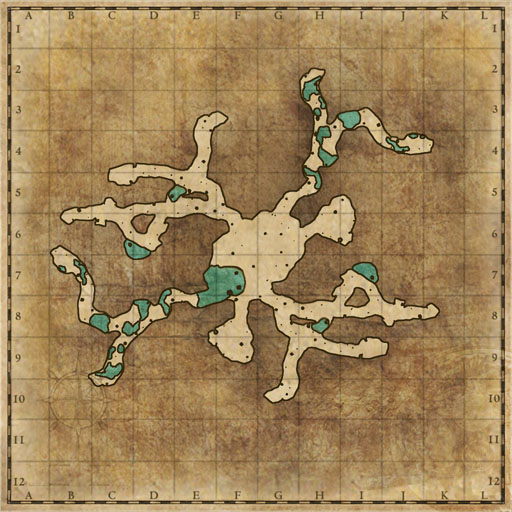
An NPC blocks the entrance until the player has obtained all eight Kanto Gym Badges (as opposed to defeating the Pokémon League at Indigo Plateau, the requirement in the Generation I games and Pokémon FireRed and LeafGreen). In Pokémon HeartGold and SoulSilver, Cerulean Cave has been rebuilt and Mewtwo can once again be found inside. In Generation II, Cerulean Cave completely collapsed but the leftovers of Mewtwo's presence remain and are found in the lake near the cave, in the form of the item Berserk Gene.

In Pokémon FireRed and LeafGreen, more Pokémon can be found only by fishing, while there are fewer different species of wild Pokémon found by walking around in the cave. In Pokémon FireRed and LeafGreen, players must further prove themselves before entering the cave, which is done by completing the quest on Sevii Islands and restoring the Network Machine of the Pokémon Network Center to operational status. The Pokémon League only permits Trainers who have entered the Hall of Fame to enter. Mewtwo inhabits the deepest part of the cave. In the Japanese game Pokémon Stadium Gold and Silver (known in English as Pokémon Stadium 2), this name is used on the map seen in the Pokédex.Ĭerulean Cave is home to a wide variety of high- level wild Pokémon.In the Japanese version of Pokémon Gold, Silver, and Crystal, this location is referred to by this name in the game data, but because the location itself does not appear in the games, this name is not visible in-game.The Japanese kana name 「ハナダのどうくつ」 ( Hanada Cave), and its kanji equivalent 「ハナダの 洞窟 ( どうくつ )」 (the latter introduced in Pokémon: Let's Go, Pikachu! and Let's Go, Eevee!), are used from Generation II onward. (In English, the email instead refers to "the cavern close to Cerulean" rather than naming it.) In these games, it is used in two of the three occasions it is named in-game: it is used by the NPC blocking the cave entrance and in an email on the computer in Cinnabar Lab.The Japanese name 「ハナダ どうくつ」 ( Hanada Cave) is used in Pokémon Red, Green, Blue, Yellow. From Generation III onward, this is always used as the name of this location.In Pokémon Stadium 2, the English name "Cerulean Cave" is used on the map seen in the Pokédex.In Pokémon Gold, Silver, and Crystal, this location is referred to by this name in the game data, but because the location itself does not appear in the games, this name is not visible in-game.In Pokémon Red, Blue, and Yellow, this location is referred to as "Cerulean Cave" both times it is named in the game: on the Town Map (only visible if the player uses the Town Map inside the Cerulean Cave) and by the NPC who blocks the cave entrance.The English name "Cerulean Cave" is used in all generations. In the Japanese games Pokémon Stadium (never released in English) and Pokémon Stadium 2 (known in English as Pokémon Stadium), this location is referred to by this name in the game data associated with the Pokédex, but because the location itself is not selectable on the map in these games, this name is not visible in-game.In the Japanese version of Pokémon Red, Green, Blue, Yellow, this location is referred to by this name on the Town Map.

The Japanese name 「ななしのどうくつ」 ( Nameless Cave) is used in Generation I.


 0 kommentar(er)
0 kommentar(er)
